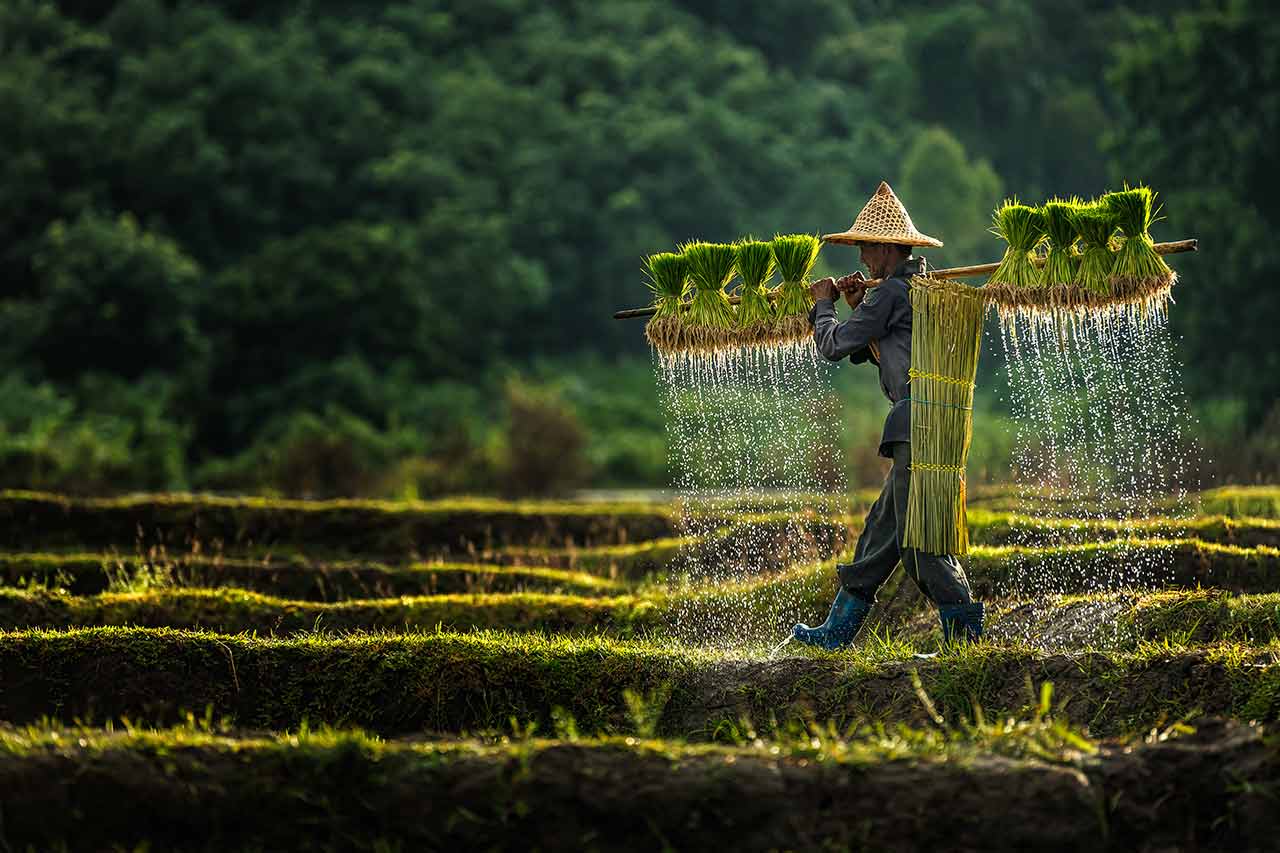Empowering smallholder farmers: How Asian Countries are building up their agriculture backbones

One of the key sustainable development goals (SDG) initiated by United Nations is to eliminate zero hunger by agriculture. In Asia Pacific region, more than half of the labor force are concentrated in agriculture. Smallholder farmer is the major group with 450 million people and produce more than 80% of the food consumed in APAC region. Their existence is crucial to the local economy and its sustainable development. Hence, Asian countries are placing more importance in empowering their smallholder farmers to improve their livelihood by helping them increase productivity and efficiency of their farms. In this article, Alcimed dives into the three different ways that Asian countries are building up their smallholder farmers.
Providing financial assurance to smallholder farmers with online platforms
Despite being the major providers of food in the region, smallholder farmers are among the world’s most financially challenged. As a result, Asian countries have set up initiatives to provide financial assurance, such as encouraging the adoption of e-commerce to help farmers make direct sales. For instance, in July 2022, the Indian government has launched Platform of Platforms (PoP) under e-NAM (National Agriculture Market), an online trading platform for agricultural commodities in India. This new platform incorporated 41 services providers from various value chain services including trading, quality checks, warehousing, fintech, market information and logistics. With such competent ecosystem, smallholder farmers in India could be largely benefited in product selling and distribution throughout agricultural value chain.
Private entities are also leveraging online technologies to help local farmers. In Aug 2022, the first Asia digital business studio has launched by Cargill and co-hosted by Singapore Economic Development Board (EDB). The studio aims to support local startups that focus on pressing industry challenges from addressing the access to market data for smallholder farmers to providing efficient food supply solutions.
Technological innovations to boost smallholder farmers’ productivity
As urbanization progresses, the agriculture industry need to keep up with this growth and push for higher productivity with the additional climate change challenges. Amidst this, technology is a major tool that could be employed by smallholder farmers to boost productivity and efficiency.
A Singapore-Japan based start-up, Umitron, has launched a world’s first real-time AI-based analytics for shrimp farming in 2022, which could analyze the shrimps’ growth condition, biomass and appetite to minimize the risks of harvest loss. In Vietnam, MimosaTEK has developed a smart irrigation system which allows smallholder farmers to use smartphones to monitor weather conditions and irrigate the crops with optimized usage of water.
Although these AgriTech could help smallholder farmers boost agricultural production and sustainability, the adoption among smallholder farmers remain a great challenge. Grow Asia has pointed that its proposed AgTech solutions are used by merely 2.5% of the total smallholder farmers in SEA. This is majorly due to the cost of the technological solutions, which does not correlate well to smallholder farmers’ financial situations.
To tackle this challenge, many SEA countries are taking the initiatives to promote the adoption. For example:
- Chinese government is providing subsidies for farmers to purchase intelligent equipment like automatic plowing tractors.
- Thai government incentivized the local farmers to adopt digital technologies by setting up grant for award. Since then, some farmers in Thailand have started using drones to plant seeds and spray pesticides.
Building smallholder woman farmers’ education and skills
According to APAC SDG Progress Report 2022, women play a major role in agriculture. In the countries such as Laos, Nepal and Bangladesh, around 60% of employed women are engaged in agriculture1. However, lack of education among smallholder women farmers in Asia is one of the major hurdles to leverage modern Agri-technologies. Therefore, it is essential to focus on women education in Asia, by not only improving the skillsets on how to use technologies, but also raising the awareness and creating initiatives in building sustainable agriculture.
In 2021, Syngenta launched a scholarship program with the Asian University for Women (AUW) to sponsor women from rural farming smallholder communities in India and Bangladesh to get access to higher education3. In March 2022, Bayer also took the lead to sponsor daughters of landless farmers for professional development and leadership fostering in agriculture with AUW. Furthermore, a seed company, East-West Seed, initiated Knowledge Transfer program in India to work on reduction of inequality by hiring more female workers and teach them various farming techniques and working equipment4.
Despite the significant contribution in the agriculture industry, smallholder farmers face several challenges in finance and productivity. To empower these smallholder farmers and elevate their livelihood, Asia is actively working on increasing financial stability, technological adoptions, and education for smallholder farmers, especially woman farmers. This trend is supported not only by the local governments, but also from community initiatives and private entities. As more digitalized solutions are being developed to improve agricultural productivity and lessen smallholder farmers’ burdens, boosting the adoption of such solutions is the next challenge to overcome if Asia wants to anticipate the future of agriculture, which will be smart and sustainable. To overcome this major challenge, our team in APAC is ready to help you explore innovations and new approaches towards smallholder farmers!
About the Author
Bettina, Business Director and Tara, Consultant in Alcimed’s Life Sciences team in Asia-Pacific team
Do you have an exploration project?
Our explorers are ready to discuss it with you